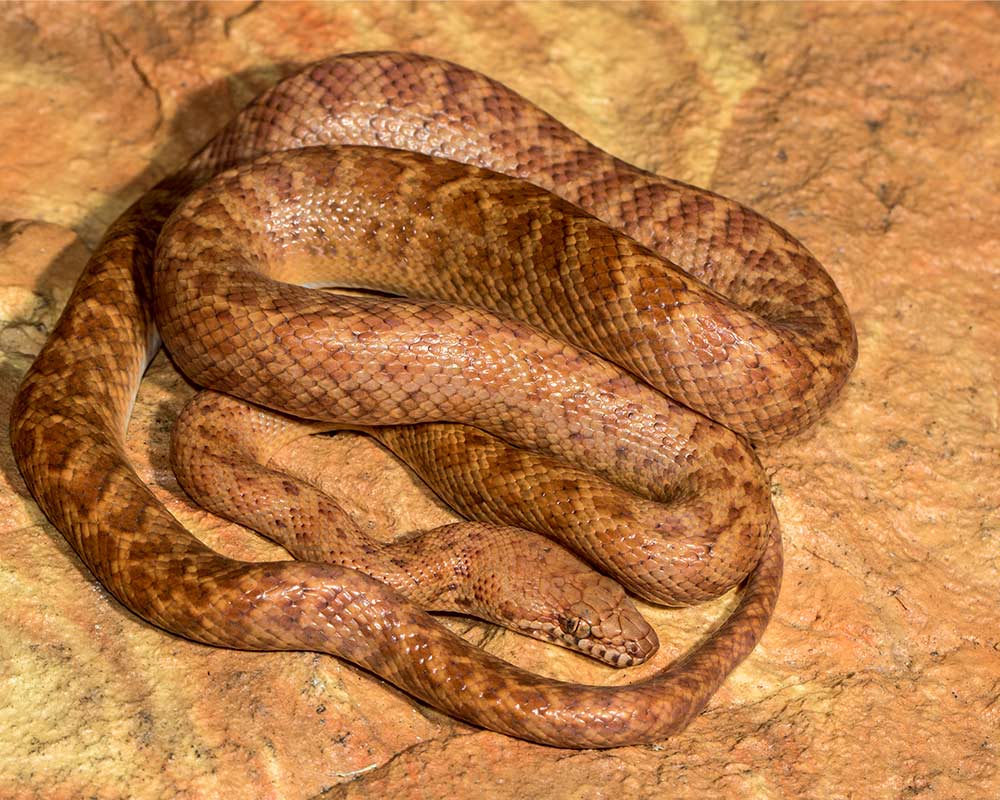Learn about the Pygmy Python
Scientific name: Antaresia perthensis
Conservation status: Least concern
Environmental Threats: Climate Change
Lifespan: Wild = up to 25 years
Reproduction: 5 to 8 eggs per clutch. 50 to 60 days incubation
Care for Young: Hatchlings are fully self-sufficient – 4g at birth
Size: Up to 60cm long
Weight: 180 - 210 grams
What do Pygmy Pythons eat?
Pygmy Pythons are carnivores - they eat geckos, other small lizards and small rodents.
Scale of scales
The Pygmy Python’s colouration varies depending on their habitat and where they call home. They may be a reddish-brown [colour of bricks] to a sandy yellow orange. Most pythons have a pattern of darker flecks or blotches with their patterns being very prominent in hatchling Pygmy Pythons. As these reptiles grow and mature their pattern tends to fade.
The Night Life
The pygmy python is nocturnal and emerges at night to find food. Their day is spent curled up, hiding out in a termite mound, spinifex grass or rocky crevice, these shelters help them to thermoregulate while also providing protection. Primarily solitary, they only come together with other snakes purposefully during the breeding season.
Out of breath
The Pygmy Python – like all pythons – is non-venomous, killing their prey through constriction, squeezing until their circulatory system fails. Their saliva contains strong digestive enzymes which help break down their food. Their forked tongue is flicked out of the mouth to help detect scents in the air.
Treadmill of teeth
Pythons have four rows of back-curving teeth in their upper jaw and two rows of teeth in their lower jaw that they use for capturing, holding, and moving prey back into the oesophagus.
Coiled care
Males will follow females who emit pheromones when they are ready to mate. The Pygmy Python is oviparous, with 5-8 eggs per clutch. The females will stay coiled around the eggs (lifting them off the substrate) and incubate them until they hatch, which is usually after 50–60 days. Once the eggs hatch, they are independent with no further parental care.
On their noise is a small egg tooth and this helps them to break through the soft shell of their egg. A few weeks after hatching egg tooth will fall off.
